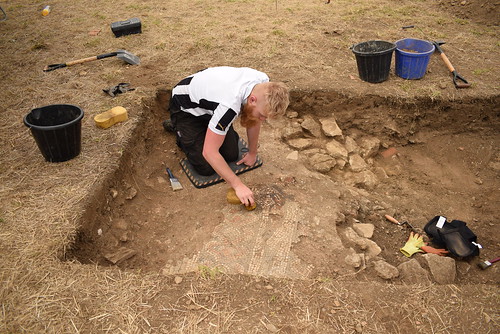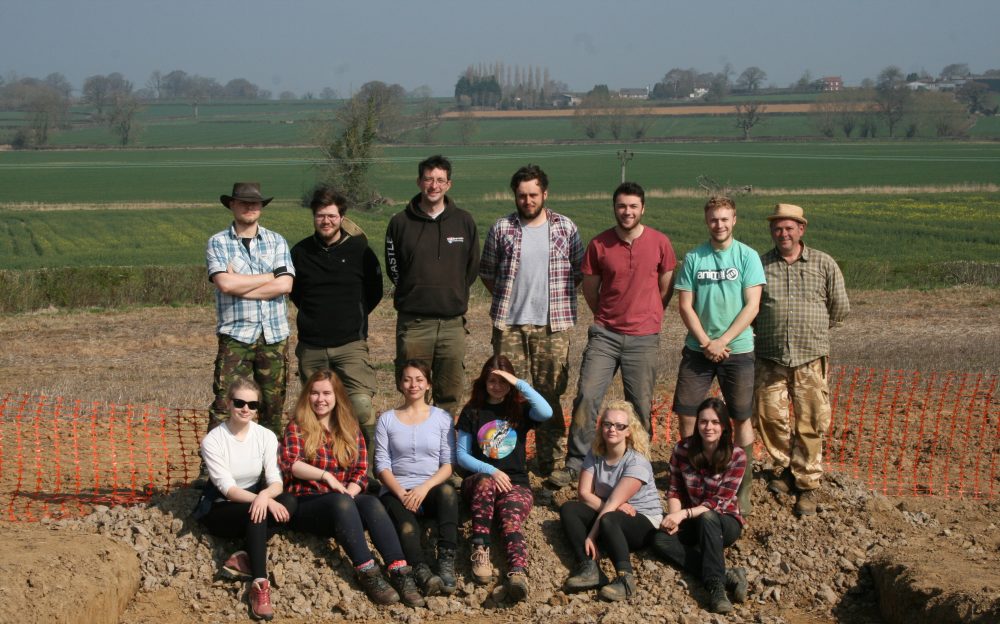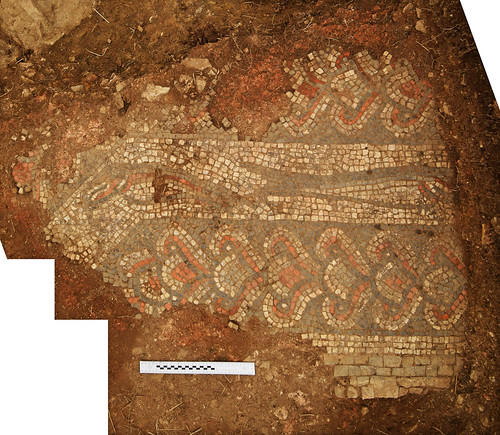This post is being written from the farm on a stormy Wednesday. We’re rained off (again) – clearly the weather gods are restoring the balance for previous seasons when we had no rain at all.
Yesterday was a busy day in lots of ways.
James started early with a radio interview for BBC Somerset at 7.50am, he and Andy then did a run to Asda to pick up supplies for the end of the excavation. We started on site at 10am. Most of the day was involved in recording and excavating the deposits that lie outside of the building and between two of its buttresses.
The sequence between the buttresses is very interesting. When we first exposed the rubble in this area we weren’t sure whether it was backfill from Hayward’s excavation or in situ Roman deposits. What we have excavated is surely the latter. The uppermost layer was largely Yeovil Stone rubble of a small size. This is probably from the robing and collapse of the structure. Under this was a layer of smashed lias and also slate roofing tile. This shows that the building shed its roof before it collapsed or was demolished. The earliest deposit, below the roof tiles, contains a lot of Roman pottery and also animal bones. This seems to be rubbish dumped around the back of the bath house. Annetta, Charlie, Chris, James I and Josh all had a hand in excavating these deposits.

Roof collapse under excavation (above)

Roofing material (lias on the left), slate in the middle and tile on the right (Above)
Dan spent most of the day gently cleaning the mosaic with a sponge and water and Antonia was cleaning up the buttress. Andy enjoyed himself excavating the joint between the buttress and the robbed out external wall of the octagonal room.

Dan washing the floor
At 4pm we hosted our open evening, which was well attended (although not on the scale of last year’s crowd). The Yeovil Archaeological and Local History Society turned out in force and so did many members of the public (some of whom have been reading this blog). It was great to see such interest in our work by the local community.
At 7pm, tired from the day’s travails we packed up and headed to Palmer’s Fish and Chips where James bought the team (you guessed it!) fish and chips in celebration of his promotion to Senior Lecturer.










